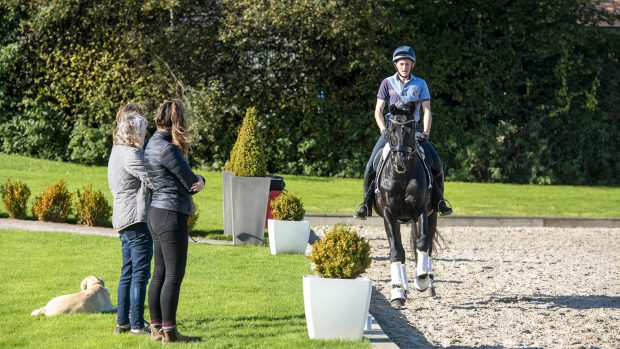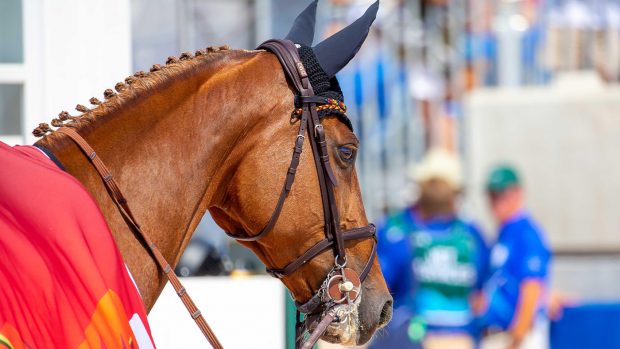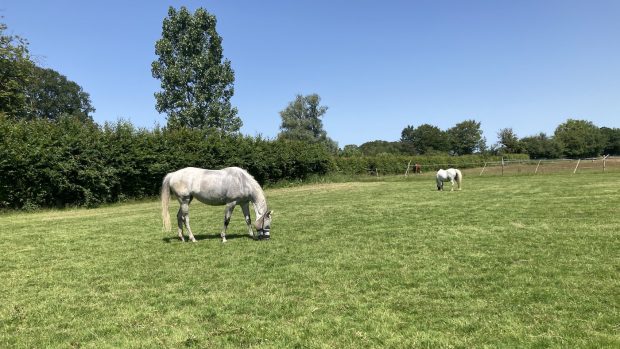A horse’s conformation is determined by the arrangement of underlying muscles, bones and other tissues. Many vets are certain that a relationship exists between faulty conformation and the development of lameness, but firm facts are hard to come by.
A recent Thoroughbred Racing and Breeding seminar in Cheltenham, held in association with the Horserace Betting Levy Board, focussed on conformation and its effect on performance, with the findings of the latest research unveiled by several experts.
Professor Wayne McIlwraith, from Colorado, explained recent research in which his team investigated conformation, its effect on soundness and whether the manipulations currently being performed are justifiable. This study was undertaken in two parts.
In the first, objective measurements of conformation were made in a series of foals, yearlings, two-year-olds and three-year-olds to see how conformation changes with growth. This was performed using skin markers, photography (three views: front, side and back) and computer image analysis. A number of precise measurements, such as wither height, length of the bottom line of the neck and other anatomical analysis, were correlated statistically — providing information as to how Thoroughbreds grow and mature.
As expected, most body parts increased in length from birth to two years. Specific findings included the fact that carpal conformation progressively changed from “back at the knee” (when the knee is deviated backwards or slightly overextended) to “over at the knee” (where the knee is forward of the main vertical strut of the limb and slightly bent) between weanling and three-year-old.
This is an important consideration when evaluating young stock. Foals and yearlings that are already over the knee are liable to get worse, whereas one that is back at the knee should improve.
For the second part of this investigation, a select group of 115 Thoroughbreds were measured in the same meticulous way.
Another study looked at racing Quarter Horses. This was then related statistically to clinical conditions and observations recorded during their two- and/or three-year-old racing careers.
The results showed that:
- Offset knees contributed to fetlock problems. This has always been deemed a bad conformational defect. It is when the knee is offset and the cannon bone is shifted to the side. It is a most obvious defect when you look at a horse from the front
- Long pasterns increased the odds of a fracture in the front limb
- When a horse is knock-kneed, a common consequence is that the lower limb is rotated and the affected animal’s toes point outwards. This increase in the carpal angle as viewed from the front (known as carpal valgus) may serve as a protective mechanism because the chance of a carpal or knee fracture or knee joint swelling was shown to decrease in line with the increase in the carpal angle. Traditionally, knocked knees and turned-out toes have been treated by foot trimming and/or surgical manipulation to achieve a straighter leg. This may actually be counterproductive in changing a desirable conformation for the worse.
- Research based on Quarter Horse work showed that the length of toe is significant: if it is even 1in longer than desirable, the risk of some knee damage increases. It is understood already that long toes are detrimental
The association between durability and performance of flat race Thoroughbreds and yearling musculoskeletal conformation was discussed by Professor Sandy Love from the University of Glasgow, who reported on archived clinical records of conformation of 3,403 Thoroughbred yearlings sold at Doncaster Bloodstock Sales, Tattersalls (UK and Ireland) or Goffs between 1994 and 1999. Each individual animal was assessed in a fixed routine by a single observer (the late Peter Calver BVMS MRCVS). This enormous and unique set of data was subsequently analysed with regard to racing performance.
As expected, it was shown that certain conformational defects were apparently associated with failure to establish a racing career. Yet for those animals who did commence a racing career, there was no link between their durability to race and the presence of specific conformational faults.
This data also indicated that more horses with forelimbs turned out, (equivalent to the carpal valgus stance in the American studies), were recorded in the raced group. This again suggests that this is an optimum design for the young racehorse.
A problem for these studies is that the animals were pre-selected to weed out those with the worst conformation. Very few badly put-together horses go to the Thoroughbred sales, nor do they become racehorses.
The thoroughness of these studies and their aim to put conformation on a clear scientific basis is to be admired, but it can be hard to relate it to horses in general, as these were not random populations. There are many other confounding variables that must be considered, such as track condition, training regimes, breeding and individual ability.




